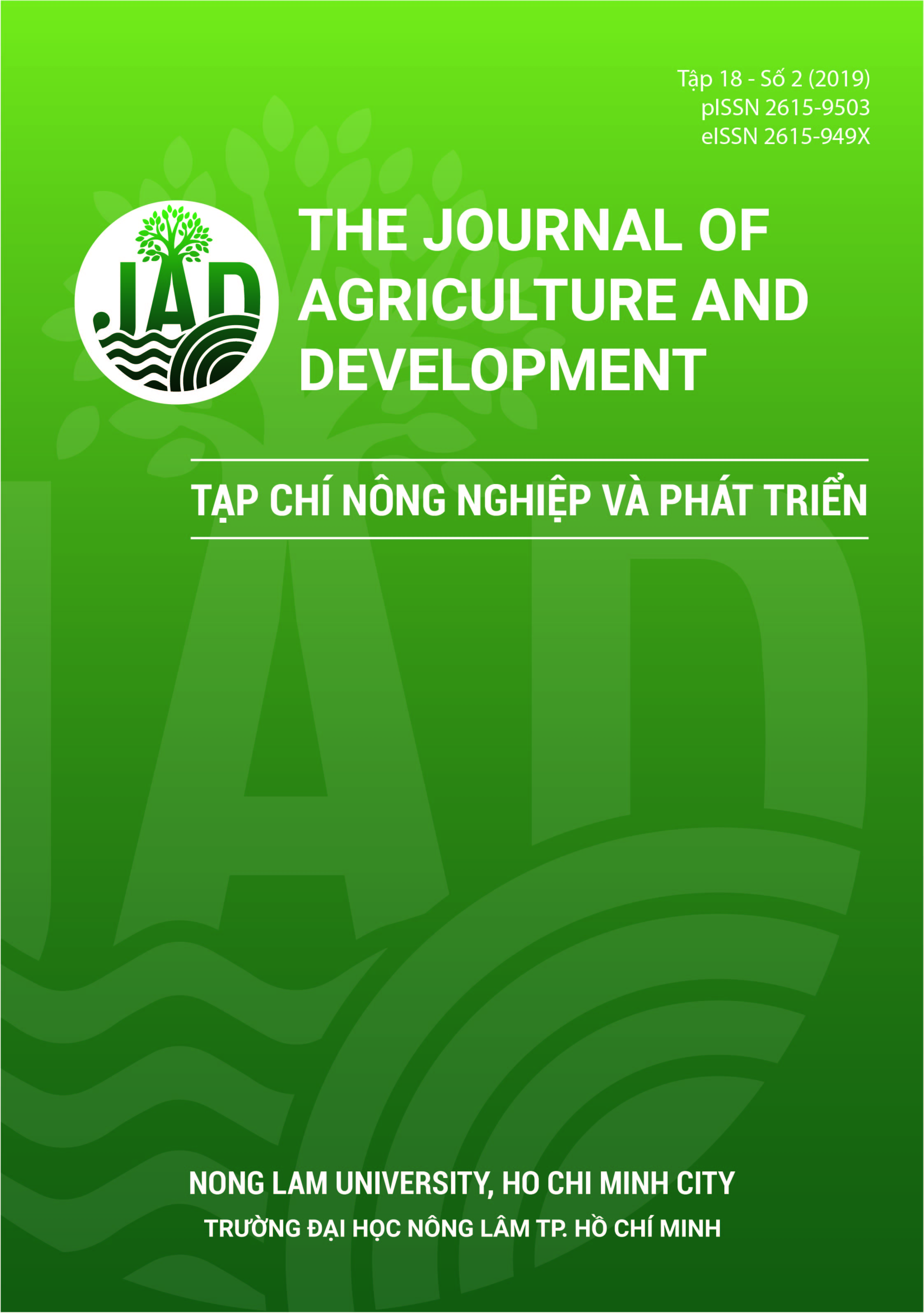Selection of drought-tolerant rice varieties from the rice variety bank of Can Tho university
Main Article Content
Abstract
Drought has been a big problem and damaged seriously to rice cultivation and production in Vietnam and the Mekong Delta region; evaluating drought tolerance of rice is a major objective for the rice improvement programmes in Can Tho University. Fifty-two collected rice varieties including resistant and susceptible control varieties were screened for water stress under the artificial drought condition. Marker RM223 was used to identify the drought tolerance genotypes for some selected varieties with good and moderate tolerant scores. After 30 days of water stress, the results were 6 varieties of good tolerant, 8 varieties of moderate tolerance, 36 varieties of moderately susceptible and 2 varieties of susceptible to drought. Analyse of PCR showed that 10 varieties expressed the similar bands with the resistant control variety. Four varieties (LH8, MTL812, Lua Canh and VB1) with good tolerant to drought were recommended to use for genetic materials of rice breeding program and applying in alternative wetting and drying irrigation technique for rice cultivation.
Article Details
References
GSO (General Statistics Office of Vietnam). (2016). Agricultural, forestry and fishery statistics. Retrieved August 19, 2018, from https://www.gso.gov.vn/default.aspx?tabid=717.
Kibria, K., Nur, F., Begum, S. N., Islam, M. M., Paul, S. K., Rahman, K. S., & Azam, S. M. M. (2009). Molecular marker based genetic diversity analysis in aromatic rice genotypes using ssr and rapd markers. Journal of Crop Production 4(1), 23-34.
Kumar, B., Gomez, S. M., Boopathi, N. M., Kumar, S. S., Kumaresan, D., Biji, K. R., Babu, B. K., Prasad, N. S. R., Shanmugasundaram, P., & Babu, R. C. (2005). Identification of microsatellite marker associated with drought tolerance in rice (Oryza sativa L.) using bulked line analysis. Tropical Agricultural Research 17, 39-47.
Le, T. X., & Tran, D. N. (2013). Selecting rice varieties tolerant to salinity in the Mekong Delta of Vietnam. Can Tho University Journal of Science 28b, 79-85.
Manickavelu, A., Nadarajan. N., Ganesh, S. K., Gnanamalar, R. P., & Chandra, R. B. (2006). Drought tolerance in rice: morphological and molecular genetic consideration. Journal of Plant Growth Regulation 50, 121-138. https://doi.org/10.1007/s10725-006-9109-3
Munns, R. (2002). Comparative physiology of salt and water strees. Plant, Cell and Environment 25(2), 239-250. https://doi.org/10.1046/j.0016-8025.2001.00808.x
Nguyen, C. H., & Huynh, T. Q. (1999). Evaluation of upland rice cooperation in mountainous areas of Vietnam. Scientific Conference of Institute of Cultivation Systems (27-32). Can Tho, Vietnam: Can Tho University Publishing House.
Nguyen, D. (2016). Damage more than 5,500 billion VND due to drought, saline intrusion. Retrieved July 19, 2018, from https://dantri.com.vn/xa-hoi/thiethai-hon-5500-ty-dong-do-han-han-xam-nhap-man20160429152416285.htm.
Nguyen, L. T., & Bui, B. C. (2008). Fine mapping for drought tolerance in rice (Oryza sativa L.). Omonrice 16, 9-15.
Ong, A. H. N., Le, D. V., & Huynh, T. Q. (2004). Studies on drought tolerance of the central Vietnam upland rice collection based on morphological traits and DNA analysis. Can Tho University Journal of Science 1, 130-136.
Rogers, S. O., & Bendich, A. J. (1988). Extraction of DNA from plant tissues. In Gelvin, S. B., Schilperoort, R. A., & Verma, D. P. S. (Eds.). Plant molecular biology manual 6 (1-11). Kluwer Academic Publishers: Dordrecht, The Netherlands.
Sumontip, B., & Prapaporn, P. 2013). Selection of rice (Oryza sativa L.) cultivars tolerant to drought stress at the vegetative stage under field condition. American Journal of Plant Science 4, 1701-1708. http://dx.doi.org/10.4236/ajps.2013.49207








